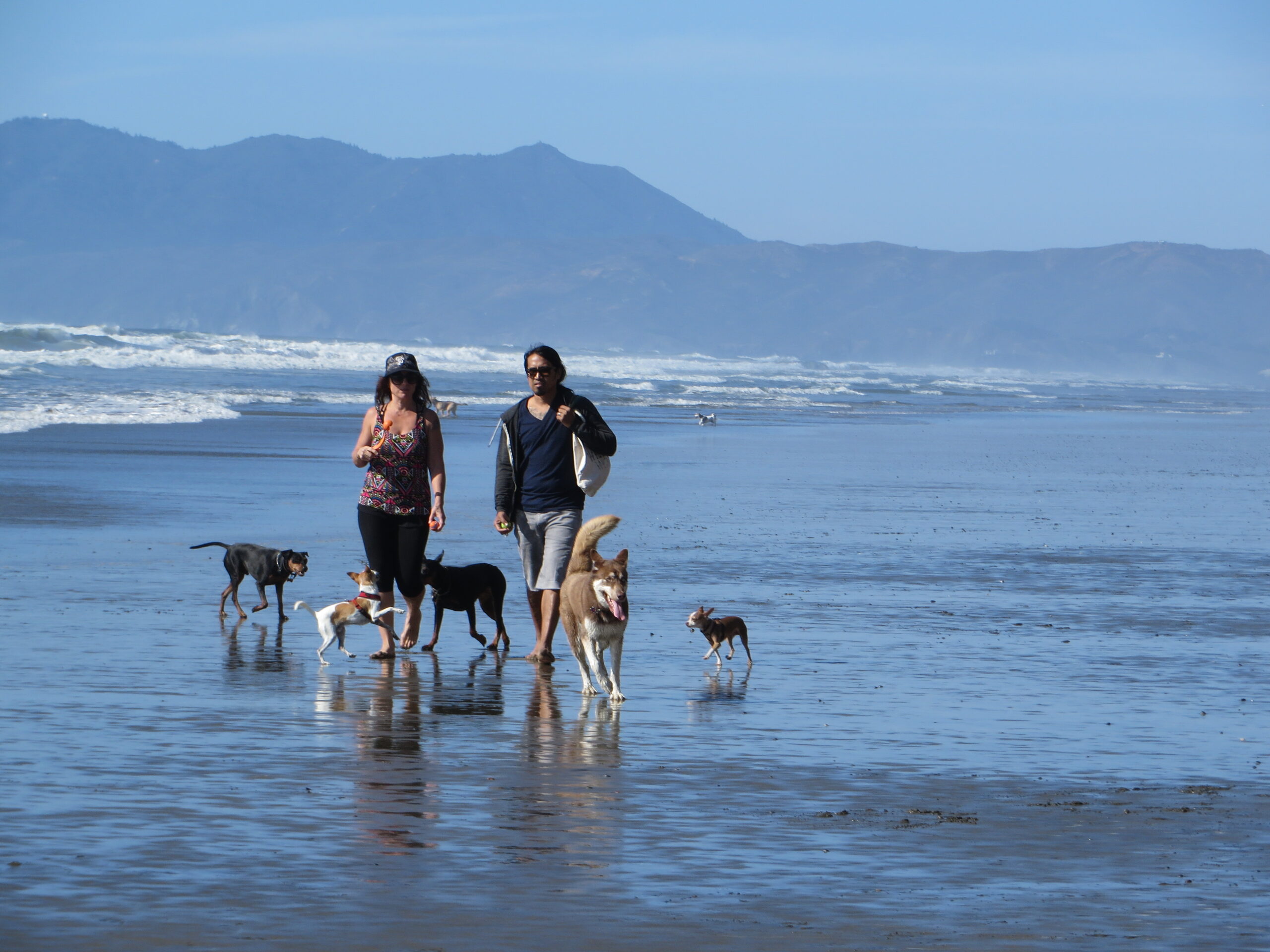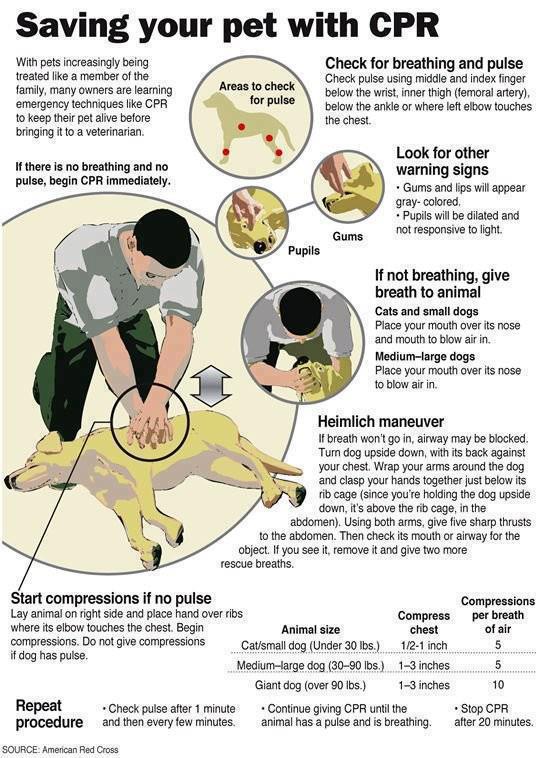dog walks
Signs of Arthritis in Dogs : Symptoms, Treatments, and Care
Millions of dogs worldwide have arthritis, which usually gets worse as the dogs get older. Finding the symptoms early and getting your pet the right care can make their life a lot better. This article explores key questions like “What are signs of arthritis in dogs?” and “Can arthritis in dogs be treated?” while offering practical advice to manage this condition effectively.
What Are Signs of Arthritis in Dogs?
Identifying arthritis in dogs early is crucial. The following symptoms are common indicators:
- Limping: You may notice your dog limping, especially after rest periods.
- Difficulty in Moving Around: Having trouble going up and down stairs, getting into the car, or getting up from lying down are all warning signs.
- Less activity: Dogs with arthritis often don’t want to play or go for walks as much.Changes in behavior: Being irritable or unwilling to be touched could be a sign of joint pain.
- Vulnerable Joints: Sometimes, joints may look swollen or feel warm when you touch them.
If you see any of these signs, you should take your pet to the vet to get a correct evaluation. Early detection is very important for managing it well.
Can Arthritis in Dogs Be Treated?
Yes, arthritis in dogs can be treated. But it’s important to remember that it can’t be cured. Treatment aims to ease your dog’s pain, make it easier for him to move around, and improve his health. These are the best treatments that are currently available:
Low Level Laser Therapy
Veterinarians are becoming more and more interested in low-level laser therapy, also called cold or Class IV laser treatment. Laser treatment doesn’t hurt and doesn’t hurt the dog in any way, unlike acupuncture, which uses needles and can be hard for some dogs.
One San Francisco dog owner reported significant improvement in her Labrador Retriever after seven laser therapy sessions. While ongoing treatments may be necessary, the results can be life-changing for dogs with arthritis.
Weight Management
Maintaining a lean, healthy weight is among the most effective ways to alleviate arthritis symptoms. Extra weight puts more stress on joints, worsening pain and stiffness. Losing a few pounds can help your dog move better and have more energy.
Physical Therapy
Customized physical therapy routines for your dog can help build muscle and make joints more stable. Activities like swimming or controlled walking are excellent low-impact options that promote mobility without putting stress on joints.
Joint Supplements
Veterinarians often recommend joint health supplements like DASUQUIN soft chews containing ingredients such as glucosamine and chondroitin. These vitamins help keep cartilage healthy and lower inflammation, which has long-term effects. Also, they’re easy to give because many of them come in tasty chewable forms that dogs love.
Pain Management Medications
Non-steroidal anti-inflammatory drugs are commonly recommended to manage pain and inflammation. However, your vet should monitor long-term use closely to avoid potential side effects.
Is It Good for a Dog With Arthritis to Walk?
Yes, walking is beneficial for dogs with arthritis—as long as it’s done correctly. Regular, moderate exercise helps maintain joint flexibility, strengthens muscles, and prevents weight gain. Here are some tips for walking a dog with arthritis:
- Start Slow: Keep walks short and at a comfortable pace. Gradually increase the walk duration as your dog regains strength.
- Use Soft Surfaces: Grass or dirt paths are gentler on joints than hard pavement.
- Avoid Overexertion: Monitor your dog closely for signs of fatigue or discomfort and adjust the exercise accordingly.
- Stay Consistent: Regular walks are better than sporadic, intense activity. Consistency is key to managing arthritis effectively.
How Long Can Dogs Live With Arthritis?
The degree of the sickness and the quality of treatment given to determine a dog’s lifetime with arthritis mostly. Many dogs may lead long, healthy lives despite their diagnosis with appropriate therapy and lifestyle changes. Longevity depends critically on early intervention, a balanced diet, consistent exercise, and pain treatment.
Tips for Improving Your Dog’s Quality of Life
In addition to treatments and exercise, there are simple ways to make your arthritic dog more comfortable:
- Provide Supportive Bedding: Orthopedic dog beds reduce pressure on sore joints and enhance sleep quality.
- Install Ramps: Use ramps or steps to help your dog access higher surfaces like couches or cars without jumping.
- Maintain a Warm Environment: Cold weather can worsen arthritis symptoms, so keep your home warm and consider using a heated blanket for added comfort.
- Use Non-Slip Rugs: Slippery floors can be challenging for dogs with arthritis. Non-slip rugs or mats provide better traction.
Conclusion
Dogs with arthritis can be difficult, but if you take the proper steps, your furry friend can have a good quality of life. You can help your dog by using advanced therapies like low-level laser therapy or making simple lifestyle changes, like weight loss and regular walking. With dedication and care, your dog can continue to live for years.
If you need more help or advice, talk to your vet. They can create a care plan for your dog that fits its needs. Early intervention and consistent care are the keys to managing arthritis effectively.
From Taxis to Dog Walkers: How Convenience Became Affordable for Everyone

The same applies to other industries, such as the dog-walking business. A dream that once could only be in the position of the rich has become a necessity for many employees today. Long hours at the office or physical limitations have made it impossible for some people to care for their pets without outside help. San Francisco, the dog ownership capital of the world, has fully embraced this trend. But it’s not just dog walking—even services like housekeeping are now considered necessary by many lower-middle-class citizens.
A Changing Workforce and Lifestyle
Gone are the days of the traditional 9-to-5 work schedule. Today, people work longer hours just to afford to live in a city like San Francisco. Due to the high charges, such additional services such as dog walking or house cleaning are imperatively required to achieve a work-life balance.
I never experienced this during my early corporate working years, so I was surprised to see such a shift. This generation of working individuals is more inclined to spend money than invest it in a goal such as saving for a house or setting up a savings account. They spend their larger salaries on services that give them more free time.
The Rise of Dog Walkers
Dog walkers have become indispensable to urban life, especially in San Francisco. But, picking a dog walker isn’t just about grabbing anyone off the street— it really depends on what you can afford and what the service needs.
Some experienced dog walkers have a few small but noticeable differences compared to those who are just starting out. For example, seasoned walkers have a better grasp of dogs and their behavior, know how to steer clear of dangers, and handle things in a more professional way. But, you know, these differences do cost something.
The Cost vs. Quality Debate
Much like the Taxi vs. Uber debate, your price for a dog walker can vary significantly. You might be tempted to hire someone who charges less or operates without a business license, but this comes with risks. Many unlicensed dog walkers or companies operate outside the rules and rely on independent contractors instead of employees.
Risks of Cutting Corners
- Dog-walking companies that evade regulations often do not:
- Conduct background checks on their contractors.
- Ensure their contractors are certified dog walkers.
- Obtain necessary park permits.
- Follow strict ethical business practices.
Such an absence of supervision can result in problems. For instance, some walkers may indicate that they will give your dog a one-hour walk but only spend a mere 20 minutes in the park. Sometimes, they can just take a quick pee break instead of going for the normal early morning walk on a rainy day. Even worse, dogs can be put in unsafe situations—like overcrowded cars or poorly supervised park visits.
Questions to Ask Your Dog Walker
To ensure your dog is in good hands, make sure you ask the right questions. Here are some key points to consider:
- Certification and Training: Are they a certified dog walker? What kind of training have they received?
- Background Checks: Does the company conduct thorough background checks on its employees or contractors?
- Park Permits: Do they have the necessary permits to walk dogs in public parks?
- Vehicle Maintenance: How often do they clean and maintain their vehicles?
- Walk Duration: How do they ensure that the promised walk duration is met?
Spotting Red Flags
Beware of dog walkers who:
- Use aggressive or evasive tactics when answering your questions.
- Operate without proper documentation or certification.
- Fail to provide references from other clients.
- Overcrowd their vehicles with too many dogs.
- Take on clients whose dog appears aggressive and mean or jumps on children when not supervised.
Why Experience Matters
Experienced dog walkers, with exceptions, possess certain professionalism that beginners may not possess. For example, they know how to manage dog reactions, either being overly excited or having anxiety issues when getting to the park. When you hire them, expect them to put the safety and well-being of your pet before anything else, unlike those who just want to get paid and care less about their client’s pets.
However, it is regrettable that unethical practices may not be easily detected. Although they may seem charming and professional-looking, they compromise the quality of work.
The Bigger Picture
The rise of affordable services like Uber and dog walking reflects a broader societal shift. Satisfaction has slowly been replaced with convenience to many, meaning this generation has postponed pertinent conventional milestones such as home owning. This interesting evolution shows how cities such as San Francisco fit in today’s world.
However, as consumers, we must be careful when making those choices. While it may seem like you would be better-off to pick cheaper products, it is not without it’s challenges. Ethics, should not be overlooked when selecting a ride-sharing service or a dog walker.
Conclusion
This also means that many people can now easily find generally available services such as Uber and dog walking while making good choices. When it comes to your pet, deciding on the best dog walker means more than choosing a convenient person; you must care about your dog’s safety, happiness, and health. Hiring a trustworthy dog walker requires prioritizing professionalism, ethics, and expertise above saving a few bucks.
A qualified dog walker will give your pet the care and attention they deserve and give you peace of mind as a pet owner. If you’re in San Francisco, the city that sets trends in pet care, it’s time to invest in a reliable and professional dog walker.
Choose a service that fits your values and wants the best for your furry friend. Hire the best San Fransisco Dog Walker Today.
How to Do Cpr on a Dog: A San Fransisco Dog Walker’s Guide
Posted by The San Francisco Dog Walker
How to Do Cpr on a Dog: A San Fransisco Dog Walker’s Guide
Emergencies can strike without warning, and as a dog owner, knowing how to perform CPR (Cardiopulmonary Resuscitation) on your furry friend could save their life. Whether your dog is choking, has drowned, or is experiencing cardiac arrest, acting quickly and confidently is critical. You will know how to do CPR on your dog, when to use it, and how to be ready for emergency situations after reading this blog.
Why Every Dog Owner Should Learn CPR
Emergencies involving pets are often unexpected, and professional help may not always be immediately available. CPR can:
- Provide life-saving care during critical moments.
- Stabilize your dog until you can get to a veterinarian.
- Empower you to act quickly and decisively in emergencies.
- CPR skills give you peace of mind and ensure you’re prepared to protect your dog’s life.
When Should You Perform CPR on Your Dog?
CPR should only be performed if your dog is unresponsive and not breathing. Here are the signs to look for.
You need to act right away if these signs are present:
- Your dog is unconscious and does not respond to calls or touch.
- No breathing or movement of the chest is seen.
- There is no beating or pulse that you can feel.
The Right Way to do CPR on Your Dog
Step 1: Look at the situation
Before you start CPR, make sure that you and your dog are both safe. You can tell if your dog is alert by saying its name, gently tapping it, or just watching.
Step 2: Check for Breathing and Pulse
Look for chest movement or feel for breath by placing your hand near your dog’s nose. To check for a pulse, put two fingers inside the thigh near the groin area or at the base of the tail. If your dog is not breathing and there’s no pulse, proceed to CPR immediately.
Step 3: Position Your Dog
Place your dog on a flat surface on their right side. Straighten their neck and head to open their airway and ensure they are in the right position for chest compressions.
Step 4: Open up the airway
Open your dog’s mouth and carefully remove any food, toys, or other objects that might be in the way. Be careful not to push things further down the throat.
Step 5: Provide Rescue Breaths
- Close your dog’s mouth and create a seal by placing your mouth over their nose.
- Gently blow air into their nose until you see the chest rise.
- Allow the chest to fall before repeating. Provide two rescue breaths initially.
Step 6: Perform Chest Compressions
The technique for chest compressions depends on the size of your dog:
- Small Dogs (<30 pounds): Use one hand to compress the chest, placing your thumb on one side and fingers on the other.
- Medium to Large Dogs (>30 pounds): Use both hands, one on top of the other, to press down on the widest part of the chest.
About a third to a half of the chest’s depth should be pressed down. Keep up a pace of 100 to 120 compressions per minute.
Step 7: Alternate Between Compressions and Breaths
Follow a cycle of 30 chest compressions and two rescue breaths. Continue this cycle until:
- Your dog begins breathing or regains consciousness.
- You reach a veterinary clinic, or professional help arrives.
Step 8: Take Your Dog to a Veterinarian
Even if your dog appears to recover, seek immediate veterinary attention. CPR can cause internal injuries, and your dog may require further care.
Tips for Performing Effective Dog CPR
- Be Gentle Yet Firm: Apply enough pressure to compress the chest without causing harm.
- Stay Calm: Panic can slow your ability to act effectively. Focus on the steps and remain composed.
- Practice Regularly: Taking a pet CPR class can help you feel more confident and prepared for emergencies.
Common Scenarios Requiring Dog CPR
Choking
Dogs are curious creatures and can choke on food, toys, or other small objects. If your dog is choking:
- Perform the Heimlich maneuver by placing your hands just below the ribcage and applying upward pressure.
- If the object is not dislodged, follow up with CPR.
Drowning
If your dog has drowned:
- Remove them from the water and clear the airway.
- Begin rescue breathing immediately, and if required, do chest compressions following.
Cardiac Arrest
Cardiac arrest may occur as a result of trauma, sickness, or poisoning. CPR is necessary in such instances to sustain circulation and oxygen supply.
Preventing Emergencies
While CPR is vital, prevention is always better. Here are steps to reduce the risk of emergencies:
- Watch Your Dog: While your dog plays and does things outside, keep an eye on him.
- Make sure the area is safe: Eliminate choke risks and ensure the safety of places that could be dangerous.
- Checkups with your vet regularly: Regular health checks can find problems before they become accidents.
Preparing for Emergencies
Being prepared can make all the difference during an emergency. Consider these tips:
- Take a Pet First Aid Class: Learn hands-on skills for CPR and other emergency care techniques.
- Assemble an Emergency Kit: Include pet first aid guide, gauze, gloves, and a muzzle.
- Keep Emergency Contacts Handy: Have your vet’s number and the nearest emergency clinic in your phone.
The Importance of Regular Exercise
Maintaining your dog’s overall health can reduce the likelihood of emergencies. Regular exercise improves cardiovascular health, strengthens muscles, and enhances respiratory function. However, overexertion should be avoided, especially for older dogs or those with pre-existing conditions.
Why Hire a San Francisco Dog Walker?
If you live in San Francisco, hiring a professional dog walker can be valuable in maintaining your dog’s health and well-being. A reliable dog walker ensures your pet gets regular, safe exercise, reduces stress, and promotes overall fitness. They can also be extra eyes, noticing unusual behavior or health concerns during walks.
Do you have a busy schedule? A San Francisco dog walker can care for and entertain your dog, giving you peace of mind while ensuring your pet stays happy and active.
Conclusion
Knowing how to do CPR on your dog is very important because it could save their life in an emergency. When your dog needs you the most, you can be sure you’ll be ready by knowing the signs of trouble, how to do CPR correctly, and knowing what to do.
But the best way to avoid problems is always to avoid them. Regular exercise, going to the vet for checkups, and living safely can significantly lower the risk of accidents.
Do you know your Poisons? Common Dog Poisons
As a dog walker in San Francisco, I’ve witnessed just how curious dogs can be. From sniffing every corner of Golden Gate Park to poking their noses into unexpected places, their curiosity often leads them into trouble. One of the most critical issues I’ve encountered is the risk of exposure to common poisons for dogs. Knowing what’s dangerous to dogs can save a life, especially when time is of the essence.
Here’s an overview of some of the most dangerous substances for dogs and tips on how to keep your furry friends safe.
What Is Dog Poisons?
Everyday substances can poison dogs, many common in households or public areas. While walking dogs in neighborhoods or parks, I’m always cautious of what they might ingest. Poison in dogs often comes from things we wouldn’t expect, such as foods, medications, or chemicals.
Here are the ones to look out for!
Medications
Over-the-counter human medications can be extremely toxic to dogs. For instance:
- Acetaminophen (Tylenol) and Ibuprofen (Advil) can cause gastrointestinal irritation, stomach ulcers, and kidney damage.
- Naproxen (Aleve) has a long half-life in dogs and can cause gastrointestinal irritation, anaemia, melena (digested blood in feces), and vomiting
Antifreeze
Antifreeze is very dangerous to dogs and causes central nervous system depression and acute renal failure. Treatment needs to be within eight hours of ingestion to be successful.
Mouse and Rat Poison
Mouse and rat poison ingestion is common in dogs. Most rodenticides in the United States are anticoagulant by depleting Vitamin K. This type is the most frequent cause of poisoning in pets. Third generation products contain brodifacoum or bromadiolone and are toxic after a single ingestion. Signs include spontaneous and excessive bleeding internally and externally. Treatment is with Vitamin K supplementation. Other rodenticides may contain cholecalciferol which causes hypercalcemia and leads to heart and kidney problems. Newer rodenticides may contain bromethalin which causes central nervous system signs such as seizures, muscle tremors, and depression.
Environmental Poisons
Environmental hazards are everywhere in San Francisco, from parks to sidewalks. Here’s what I watch for during our walks:
Insecticides
Insecticides used in dogs for fleas and ticks commonly contain either organophosphates or carbamates. they can be absorbed through the skin, conjunctiva, gastrointestinal tract, and lungs. Organophosphates inhibit acetylcholinesterase irreversibly and carbamates inhibit cholinesterase reversibly. Toxicity occurs through over-dose with an appropriate product or use of an agricultural product. Signs for both include hyper-salivation, vomiting, lethargy, tremors, difficulty walking, weakness, and death.
Lead Poisoning
Lead poisoning is uncommon in dogs. Exposure to lead is from eating paint chips from lead-based paint (found in houses painted prior to 1950), and eating lead objects such as shot, fishing sinkers, or counterweights. Signs of poisoning include vomiting, diarrhea, blindness, seizures, and tremors.
Foods That Are Poisonous to Dogs
Certain foods that are harmless to humans can be deadly to dogs. While walking dogs in San Francisco’s parks, I often remind owners to keep snacks securely out of reach.
- Raisins and Grapes: Even small amounts of raisins or grapes can cause kidney failure in dogs. Symptoms include lethargy, vomiting, and a loss of appetite.
- Xylitol: This artificial sweetener, found in sugar-free gums and candies, can cause a dangerous drop in blood sugar and liver damage.
- Alcohol: Even tiny amounts can lead to poisoning, causing confusion, vomiting, or worse.
Chocolate
Chocolate is a common cause of poisoning in dogs. The toxic principles in chocolate are theobromine and caffeine. Baker’s chocolate is the most dangerous form since it contains higher concentrations of these drugs, followed by semi-sweet, dark, and then milk chocolate. Signs include vomiting, diarrhea, tremors, difficulty walking, seizures, and heart problems.
Chocolate is a common cause of dog poisoning and one I’ve seen too many times. The toxic ingredients in chocolate are theobromine and caffeine, which dogs metabolize much more slowly than humans. Different types of chocolate pose varying levels of danger:
- Baker’s chocolate is the most dangerous, with the highest concentrations of theobromine and caffeine.
- Semi-sweet and dark chocolate follow in toxicity.
- Milk chocolate is less toxic but can still cause problems in large quantities.
How Much Chocolate Is Dangerous to a Dog?
Even a small amount of chocolate can cause vomiting, diarrhea, and tremors. Larger amounts may lead to difficulty walking, seizures, or heart problems. Owners often ask me, “How much chocolate can a dog eat before it becomes dangerous?” The answer varies based on your dog’s size and the type of chocolate, but any amount is potentially harmful. It’s always better to err on the side of caution and avoid letting your dog consume chocolate at all.
What to Do If Your Dog Is Poisoned
If you suspect your dog has ingested something toxic, time is critical. Contact your veterinarian or an animal poison control centre immediately. Bring the packaging of the substance or a sample of what they consumed to assist with diagnosis.
How to Prevent Poisoning in Dogs
- Secure Your Home: Keep medications, foods, and cleaning products out of reach. Store these items in cabinets or containers that your dog cannot access.
- Supervise Outdoor Time: Pay attention to what your dog sniffs or eats during walks. That is especially important in areas like Golden Gate Park or Fort Funston, where hidden dangers like rodenticides or chocolate crumbs might lurk.
- Be Prepared: Learn about what is poisonous to dogs and how to respond in an emergency.
A Final Note: Staying Safe Together
As a San Francisco dog walker, I see firsthand how quickly dogs can get into trouble. By staying informed about common poisons for dogs and being proactive, you can protect your furry friend from harm. Whether knowing how much chocolate is dangerous to a dog or spotting hazards like antifreeze spills, vigilance is key. Let’s work together to ensure our dogs live happy, healthy lives in our beautiful city!








